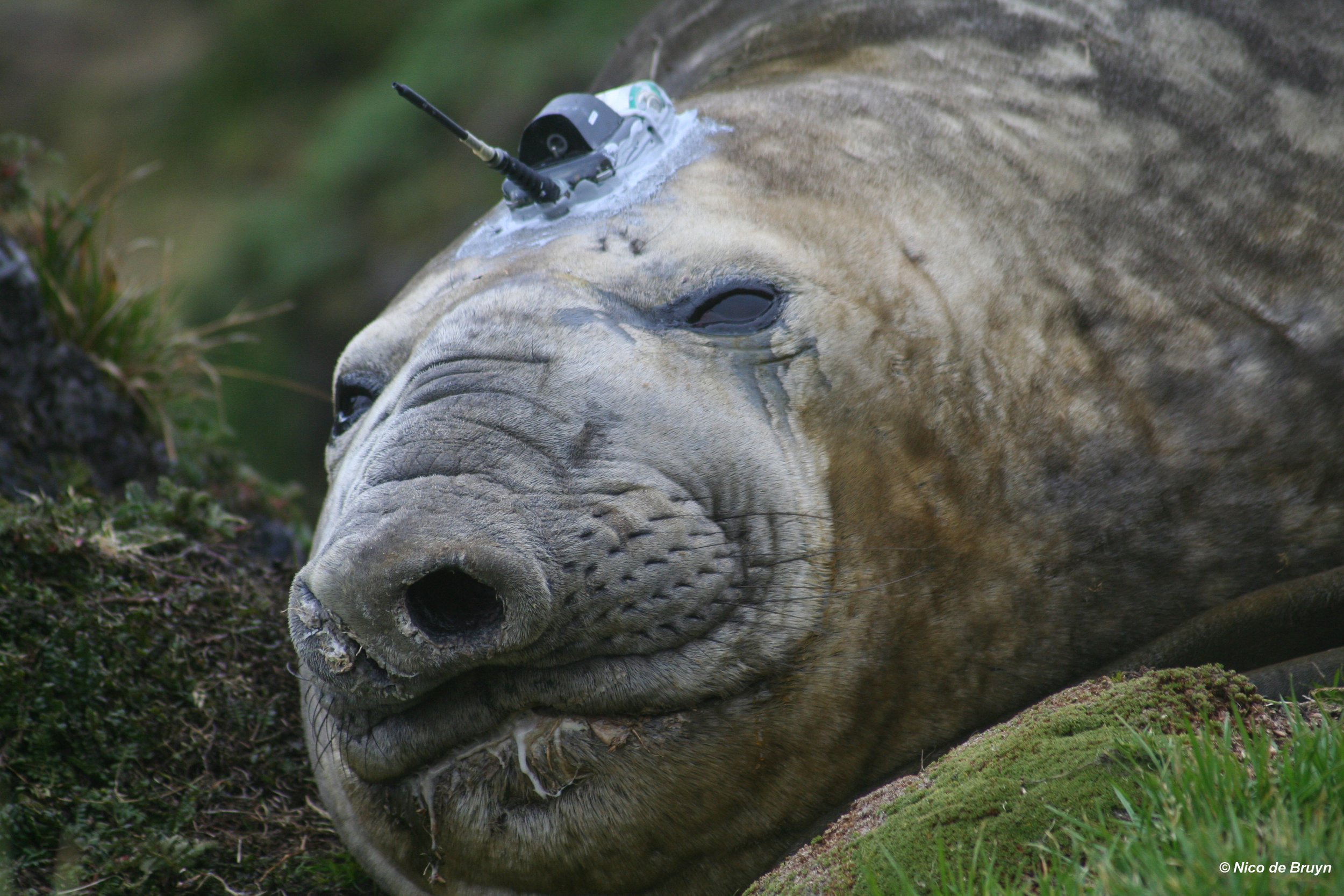NEW ECOLOGY PAPER : Female seals that breed young have a slower rate of ageing
/At Marion Island, some elephant seal pups have a ‘golden spoon’ start to life. We measure this through their weaning mass, with the ‘golden spoon’ pups being the heavier ones.
‘Golden spoon’ females tend to reproduce at a younger age than those that were relatively small at weaning. In a new paper published in Ecology, Chris Oosthuizen and colleagues show that an early age of first reproduction also correlates with a slower rate of ageing, and a higher expected fitness.
A 17-year old southern elephant seal mother with her 10-day old pup at Ship’s Cove, Marion Island. Female seals that breed young, also enjoy a slower rate of ageing and produce more offspring in their lifetime than those that delay breeding. Photo credit: Chris Oosthuizen
How animals age in the wild is central to understanding their life-history evolution. Senescence (age-related declines in fitness components) stems from a weakening in the strength of natural selection with age. Rapid development may accelerate the onset of senescence (the “developmental theory of aging”) or allocation to early life performance may come at a cost to late-life performance (the “disposable soma theory”).
This study used capture-recapture data of over 7000 female southern elephant seals collected over almost 40 years at Marion Island to test for negative or positive correlations between early-life and late-life traits. It specifically tested whether the onset and rate of actuarial senescence (the increase in mortality hazards with age) correlated with the age of first reproduction.
Because marine mammals spend most of their lives at sea, the analysis was specifically designed to study early-late life-history correlations in wild animal populations where some breeding attempts and all deaths go undetected.
Fig. 1 (a) Survival trajectory of female elephant seals breeding for the first time at age 3. (b) Survival trajectory of females breeding for the first time at ages 4 or later. Solid circles correspond to the annual survival probability of experienced breeders. The regression line indicates the logit-linear relationship between age and survival of experienced breeders. Early breeders had a lower senescence rate than delayed breeders. The age at the onset of senescence (where survival probability starts to decline at old age) is indicated with a dotted line. (Oosthuizen et al. 2021)
Females with an early age of first reproduction survived better than those with delayed reproduction in both the short- and the long-term. Females breeding at a young age had lower rates of senescence when they were old (above 17 years of age), and produced more offspring during their lives than those that delayed breeding.
Congratulations to Chris and colleagues for this excellent publication and for translating the almost 40 years of MIMMP field research into scientific outputs which further our understanding of marine mammals!
Read more and access the paper HERE



















